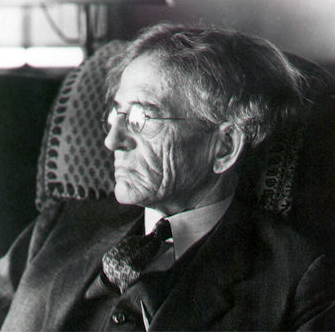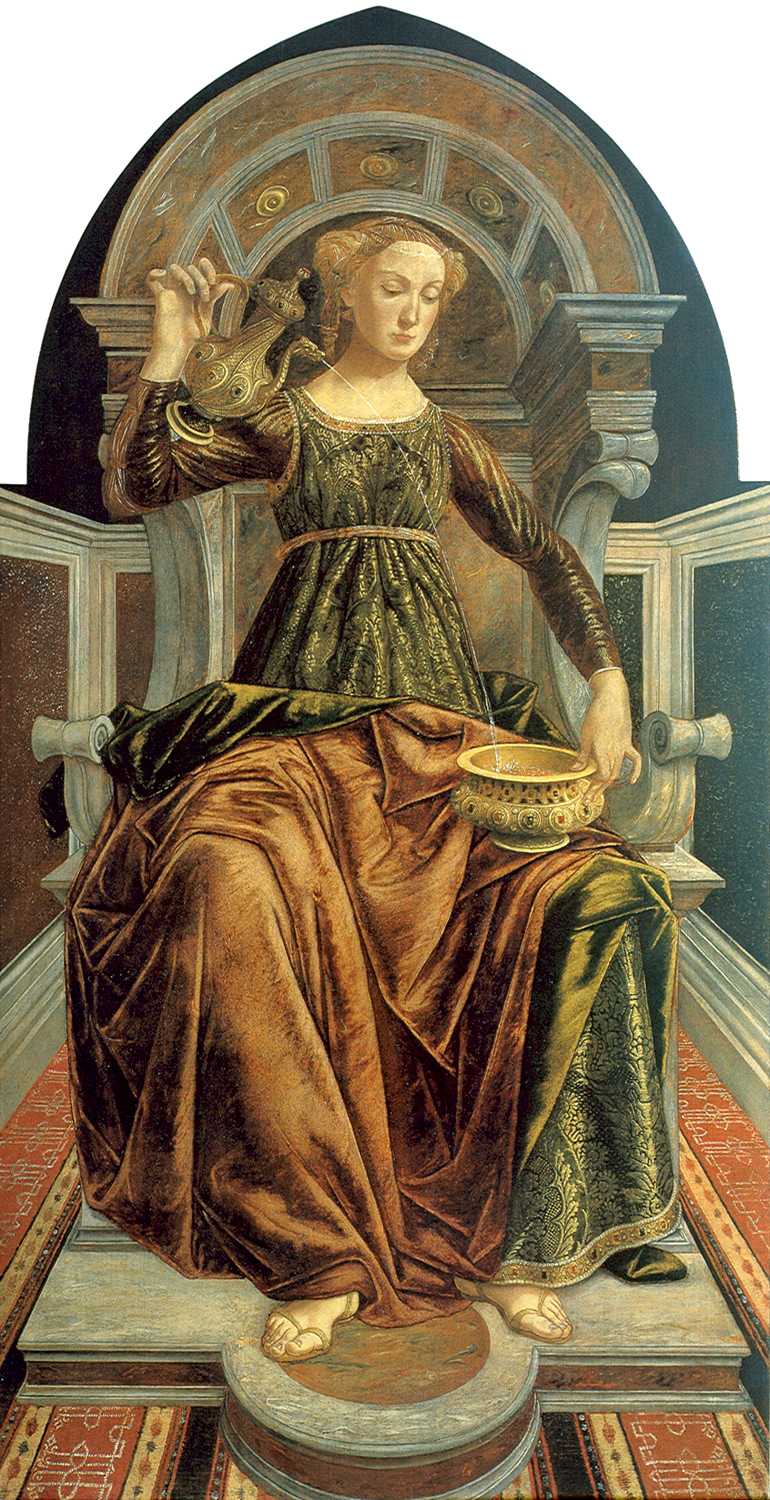|
John R. Commons
John Rogers Commons (October 13, 1862 – May 11, 1945) was an American institutional economist, Georgist, progressive and labor historian at the University of Wisconsin–Madison. Early years John R. Commons was born in Hollansburg, Ohio on October 13, 1862. Commons had a religious upbringing which led him to be an advocate for social justice early in life. Commons was considered a poor student and suffered from a mental illness while studying. He was allowed to graduate without finishing because of the potential seen in his intense determination and curiosity. At this time, Commons became a follower of Henry George's 'single tax' economics. He carried this 'Georgist' or 'Ricardian' approach to economics, with a focus on land and monopoly rents, throughout the rest of his life, including a proposal for income taxes with higher rates on land rents. After graduating from Oberlin College, Commons did two years of graduate studies at Johns Hopkins University, where he studied u ... [...More Info...] [...Related Items...] OR: [Wikipedia] [Google] [Baidu] |
Institutional Economics
Institutional economics focuses on understanding the role of the evolutionary process and the role of institutions in shaping economic behavior. Its original focus lay in Thorstein Veblen's instinct-oriented dichotomy between technology on the one side and the "ceremonial" sphere of society on the other. Its name and core elements trace back to a 1919 '' American Economic Review'' article by Walton H. Hamilton. Institutional economics emphasizes a broader study of institutions and views markets as a result of the complex interaction of these various institutions (e.g. individuals, firms, states, social norms). The earlier tradition continues today as a leading heterodox approach to economics.Warren J. Samuels (9872008). "institutional economics," '' The New Palgrave: A Dictionary of Economics''Abstract. "Traditional" institutionalism rejects the ''reduction'' of institutions to simply tastes, technology, and nature (see naturalistic fallacy). Tastes, along with expectation ... [...More Info...] [...Related Items...] OR: [Wikipedia] [Google] [Baidu] |
Labor History (journal)
''Labor History'' is a peer-reviewed academic journal which publishes articles regarding the history of the labor movement in the United States, Europe, and other regions and countries. Publication history The journal was established in 1953 as the ''Labor Historian's Bulletin'' (), and later incorporated ''Newsletter'' (). In 1960, the journal changed its name to ''Labor History'' and was being published by the Tamiment Institute, later to be published by CarFax, a subsidiary of Taylor & Francis. In 2003 the journal was sold to Taylor and Francis. Following conflicts with the new publisher over editorial independence, editor-in-chief Leon Fink, the entire editorial board, and much of the editorial staff left to establish a rival journal, '' Labor: Studies in Working-Class History''. The journal is currently published by Routledge, an imprint of Taylor and Francis. The current editor is Craig Phelan of Solidarity Center (Abuja, Nigeria), US editor Gerald Friedman of the Uni ... [...More Info...] [...Related Items...] OR: [Wikipedia] [Google] [Baidu] |
Ethics
Ethics or moral philosophy is a branch of philosophy that "involves systematizing, defending, and recommending concepts of right and wrong behavior".''Internet Encyclopedia of Philosophy'' The field of ethics, along with aesthetics, concerns matters of value; these fields comprise the branch of philosophy called axiology. Ethics seeks to resolve questions of human morality by defining concepts such as good and evil, right and wrong, virtue and vice, justice and crime. As a field of intellectual inquiry, moral philosophy is related to the fields of moral psychology, descriptive ethics, and value theory. Three major areas of study within ethics recognized today are: # Meta-ethics, concerning the theoretical meaning and reference of moral propositions, and how their truth values (if any) can be determined; # Normative ethics, concerning the practical means of determining a moral course of action; # Applied ethics, concerning what a person is obligated (or permitted) ... [...More Info...] [...Related Items...] OR: [Wikipedia] [Google] [Baidu] |
Prohibition Party
The Prohibition Party (PRO) is a political party in the United States known for its historic opposition to the sale or consumption of alcoholic beverages and as an integral part of the temperance movement. It is the oldest existing third party in the United States and the third-longest active party. Although it was never one of the leading parties in the United States, it was once an important force in the Third Party System during the late 19th and early 20th centuries. The organization declined following the enactment of Prohibition in the United States but saw a rise in vote totals following the repeal of the Eighteenth Amendment in 1933. However, following World War II it declined with 1948 being the last time its presidential candidate received over 100,000 votes and 1976 being the last time it received over 10,000 votes. The party's platform has changed over its existence. Its platforms throughout the 19th century supported progressive and populist positions includi ... [...More Info...] [...Related Items...] OR: [Wikipedia] [Google] [Baidu] |
Temperance (virtue)
Temperance in its modern use is defined as moderation or voluntary self-restraint. It is typically described in terms of what an individual voluntarily refrains from doing. This includes restraint from revenge by practicing non-violence and forgiveness, restraint from arrogance by practicing humility and modesty, restraint from excesses such as extravagant luxury or splurging, and restraint from rage or craving by practicing calmness and self-control. Temperance has been described as a virtue by religious thinkers, philosophers, and more recently, psychologists, particularly in the positive psychology movement. It has a long history in philosophical and religious thought. In classical iconography, the virtue is often depicted as a woman holding two vessels transferring water from one to another. It is one of the cardinal virtues in western thought found in Greek philosophy and Christianity, as well as eastern traditions such as Buddhism and Hinduism. Temperance is one of the ... [...More Info...] [...Related Items...] OR: [Wikipedia] [Google] [Baidu] |
Economics
Economics () is the social science that studies the production, distribution, and consumption of goods and services. Economics focuses on the behaviour and interactions of economic agents and how economies work. Microeconomics analyzes what's viewed as basic elements in the economy, including individual agents and markets, their interactions, and the outcomes of interactions. Individual agents may include, for example, households, firms, buyers, and sellers. Macroeconomics analyzes the economy as a system where production, consumption, saving, and investment interact, and factors affecting it: employment of the resources of labour, capital, and land, currency inflation, economic growth, and public policies that have impact on these elements. Other broad distinctions within economics include those between positive economics, describing "what is", and normative economics, advocating "what ought to be"; between economic theory and applied economics; between ratio ... [...More Info...] [...Related Items...] OR: [Wikipedia] [Google] [Baidu] |
Sociology
Sociology is a social science that focuses on society, human social behavior, patterns of social relationships, social interaction, and aspects of culture associated with everyday life. It uses various methods of empirical investigation and critical analysis to develop a body of knowledge about social order and social change. While some sociologists conduct research that may be applied directly to social policy and welfare, others focus primarily on refining the theoretical understanding of social processes and phenomenological method. Subject matter can range from micro-level analyses of society (i.e. of individual interaction and agency) to macro-level analyses (i.e. of social systems and social structure). Traditional focuses of sociology include social stratification, social class, social mobility, religion, secularization, law, sexuality, gender, and deviance. As all spheres of human activity are affected by the interplay between social structure and individu ... [...More Info...] [...Related Items...] OR: [Wikipedia] [Google] [Baidu] |
University Of Wisconsin
A university () is an institution of higher (or tertiary) education and research which awards academic degrees in several academic disciplines. ''University'' is derived from the Latin phrase ''universitas magistrorum et scholarium'', which roughly means "community of teachers and scholars". Universities typically offer both undergraduate and postgraduate programs. The first universities in Europe were established by Catholic Church monks. The University of Bologna (), Italy, which was founded in 1088, is the first university in the sense of: *being a high degree-awarding institute. *using the word ''universitas'' (which was coined at its foundation). *having independence from the ecclesiastic schools and issuing secular as well as non-secular degrees (with teaching conducted by both clergy and non-clergy): grammar, rhetoric, logic, theology, canon law, notarial law.Hunt Janin: "The university in medieval life, 1179–1499", McFarland, 2008, , p. 55f.de Ridder-Symoens, H ... [...More Info...] [...Related Items...] OR: [Wikipedia] [Google] [Baidu] |
Syracuse University
Syracuse University (informally 'Cuse or SU) is a Private university, private research university in Syracuse, New York. Established in 1870 with roots in the Methodist Episcopal Church, the university has been nonsectarian since 1920. Located in the city's University Hill, Syracuse, University Hill neighborhood, east and southeast of Downtown Syracuse, the large campus features an eclectic mix of architecture, ranging from nineteenth-century Romanesque Revival architecture, Romanesque Revival to contemporary buildings. Syracuse University is organized into 13 schools and colleges, with nationally recognized programs in Syracuse University School of Architecture, architecture, Maxwell School of Citizenship and Public Affairs, public administration, S.I. Newhouse School of Public Communications, journalism and communications, Martin J. Whitman School of Management, business administration, Syracuse University School of Information Studies, information studies, Syracuse Univers ... [...More Info...] [...Related Items...] OR: [Wikipedia] [Google] [Baidu] |
Johns Hopkins University
Johns Hopkins University (Johns Hopkins, Hopkins, or JHU) is a private research university in Baltimore, Maryland. Founded in 1876, Johns Hopkins is the oldest research university in the United States and in the western hemisphere. It consistently ranks among the most prestigious universities in the United States and the world. The university was named for its first benefactor, the American entrepreneur and Quaker philanthropist Johns Hopkins. Hopkins' $7 million bequest to establish the university was the largest philanthropic gift in U.S. history up to that time. Daniel Coit Gilman, who was inaugurated as Johns Hopkins's first president on February 22, 1876, led the university to revolutionize higher education in the U.S. by integrating teaching and research. In 1900, Johns Hopkins became a founding member of the American Association of Universities. The university has led all U.S. universities in annual research expenditures over the past three decades. Johns Hopkins is ... [...More Info...] [...Related Items...] OR: [Wikipedia] [Google] [Baidu] |
Oberlin College
Oberlin College is a private liberal arts college and conservatory of music in Oberlin, Ohio. It is the oldest coeducational liberal arts college in the United States and the second oldest continuously operating coeducational institute of higher learning in the world. The Oberlin Conservatory of Music is the oldest continuously operating conservatory in the United States. In 1835, Oberlin became one of the first colleges in the United States to admit African Americans, and in 1837 the first to admit women (other than Franklin College's brief experiment in the 1780s). It has been known since its founding for progressive student activism. The College of Arts & Sciences offers more than 50 majors, minors, and concentrations. Oberlin is a member of the Great Lakes Colleges Association and the Five Colleges of Ohio consortium. Since its founding, Oberlin has graduated 16 Rhodes Scholars, 20 Truman Scholars, 12 MacArthur fellows, four Rome Prize winners, seven Pulitzer Prize ... [...More Info...] [...Related Items...] OR: [Wikipedia] [Google] [Baidu] |








